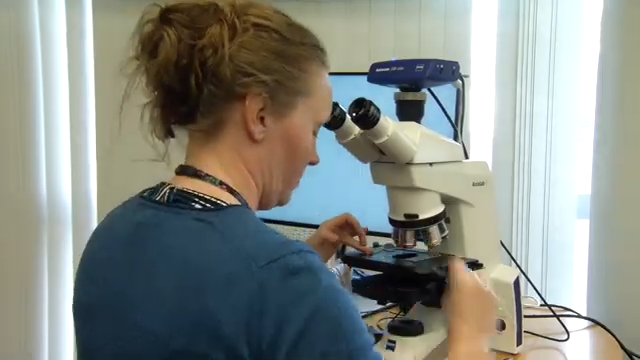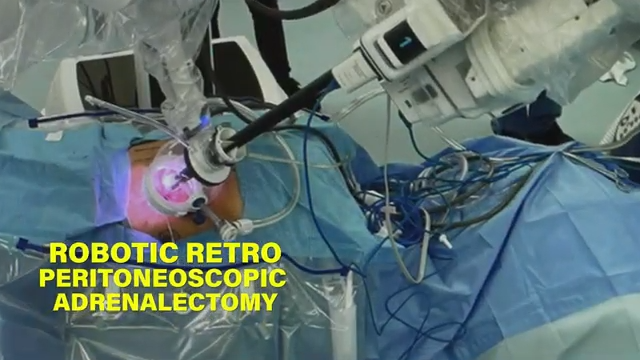NASHVILLE, Tenn. (Ivanhoe Newswire)— More than 740,000 Americans have kidney failure. Out of those, about 200,000 are eligible for a kidney transplant. That means more than 500,000 Americans have no other option besides being tied to a dialysis machine for several hours a day three times a week. Twelve people die each day waiting for a kidney transplant. Now researchers have developed a device that may have patients saying goodbye to dialysis for good.
They’re about the size of a fist and filter about 35 gallons of blood per day. Your kidneys are vital to a healthy life.
“The kidney does two major things. One is to clean the toxins that accumulate in the body as well as the fluid that accumulates in the body and get rid of them,” explained Alp Ikizler, MD, a professor of medicine at Vanderbilt University Medical Center.
But when your kidneys fail, your only option is to start dialysis and wait until a kidney is available. But …
“We have more than 150,000 patients starting on dialysis and we could only offer 30 to 40,000 kidney transplants a year,” elaborated Dr. Ikizler.
So, researchers are developing an artificial kidney that may give patients an opportunity for a dialysis-free life. The device has two parts.
“We have a filter that separates waste products and salt and water from blood, and we have a bioreactor of cultured kidney cells and concentrate that filtrate down into a manageable amount of fluid,” described William H. Fissell, MD, an associate professor of medicine at Vanderbilt University Medical Center.
Doing the same work as a healthy kidney, but in an implanted device that is about the same size. It will operate around the clock. Not deterring people from traveling or enjoying certain activities.
Dr. Fissell explained, “It’s hard to travel if you’re a dialysis patient. You have to find a dialysis unit wherever you’re going.”
For Fissell, this research is also personal.
“I have kidney disease in my family. I have kidney disease,” shared Dr. Fissell.
Even though he hasn’t needed dialysis, he’s working on the next steps to get this device to dialysis patients who will need it the most.
Dr. Fissell is working with professor Shuvo Roy at UCSF. If sufficient funding is obtained, they hope to have this device in human clinical trials within two years to help those in kidney failure. For every person who gets a kidney transplant, five patients do not.
Contributors to this news report include: Cyndy McGrath, Executive Producer; Milvionne Chery, Field Producer; Bruce Maniscalco, Videographer; Roque Correa, Editor.
To receive a free weekly e-mail on Medical Breakthroughs from Ivanhoe, sign up at: http://www.ivanhoe.com/ftk
MEDICAL BREAKTHROUGHS
RESEARCH SUMMARY
TOPIC: ARTIFICIAL KIDNEY REPLACES DIALYSIS
REPORT: MB #4817
BACKGROUND: Around 15 percent of U.S. adults have chronic kidney disease, and about nine in 10 do not know they have it. It is more common in women aged 65 years or older. Kidney failure, the last stage of chronic kidney disease, is when your kidneys have stopped working well enough for you to survive without dialysis or a kidney transplant. Diabetes is the most common cause of kidney failure, and high blood pressure is the second most common cause. Some other problems leading to kidney failure can be autoimmune diseases, such as lupus and nephropathy; genetic diseases, such as polycystic kidney disease; nephrotic syndrome; or urinary tract problems.
(Source: https://www.cdc.gov/kidneydisease/publications-resources/2019-national-facts.html and https://www.kidneyfund.org/kidney-disease/kidney-failure/)
CURRENT TREATMENTS: When kidneys can’t keep up with waste and fluid clearance on their own, you have end-stage kidney disease and need dialysis or a kidney transplant. Dialysis artificially removes waste products and extra fluid from your blood. In hemodialysis, a machine filters waste and excess fluids from your blood. In peritoneal dialysis, a thin tube (catheter) inserted into your abdomen fills your abdominal cavity with a dialysis solution that absorbs waste and excess fluids. After a period of time, the dialysis solution drains from your body, carrying the waste with it. A kidney transplant involves surgically placing a healthy kidney from a donor into your body. Medications will need to be taken for the rest of your life to keep your body from rejecting the new organ. For some who choose not to have dialysis or a kidney transplant, a third option is to treat kidney failure with conservative measures.
ARTIFICIAL KIDNEY ON THE HORIZON: The Kidney Project headquartered at UCSF was granted $1 million, from The John and Marcia Goldman Foundation, to advance its bioartificial kidney. The grant will support the development of the device’s bioreactor, which will perform essential kidney functions that dialysis treatments don’t replace. This first-of-its-kind artificial organ will be implanted in the abdomen to replace a damaged or diseased kidney without the need for immunosuppressant drugs and at less than one-third the cost of chronic dialysis. The bioreactor contains a culture of human kidney cells, which help filter a patient’s blood by reabsorbing nutrients and routing toxins and excess water, the urine, to the bladder for excretion. It will also assist with blood pressure regulation and hormone production which is an important advantage over dialysis treatments.
FOR MORE INFORMATION ON THIS REPORT, PLEASE CONTACT:
CRAIG BOERNER
If this story or any other Ivanhoe story has impacted your life or prompted you or someone you know to seek or change treatments, please let us know by contacting Marjorie Bekaert Thomas at mthomas@ivanhoe.com




